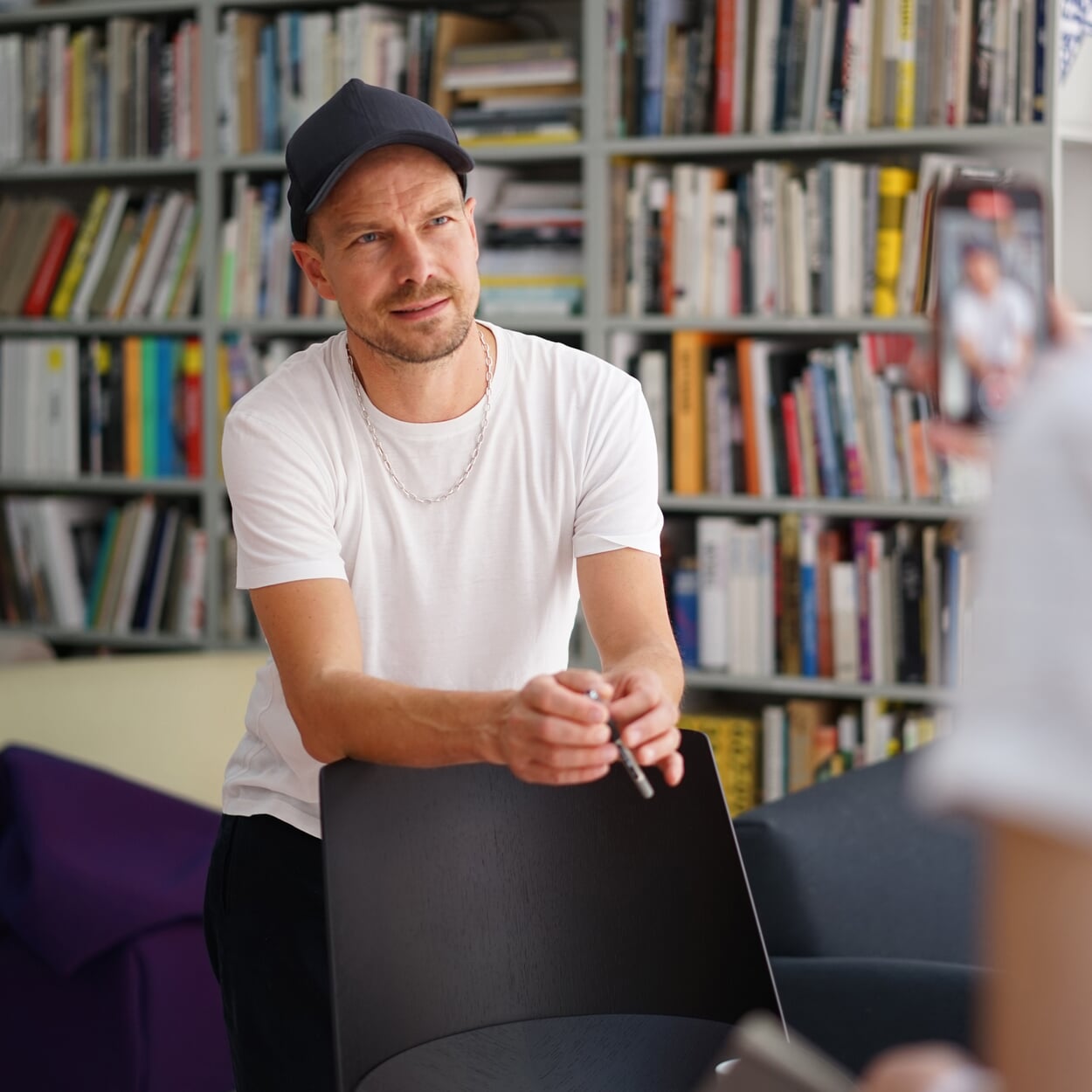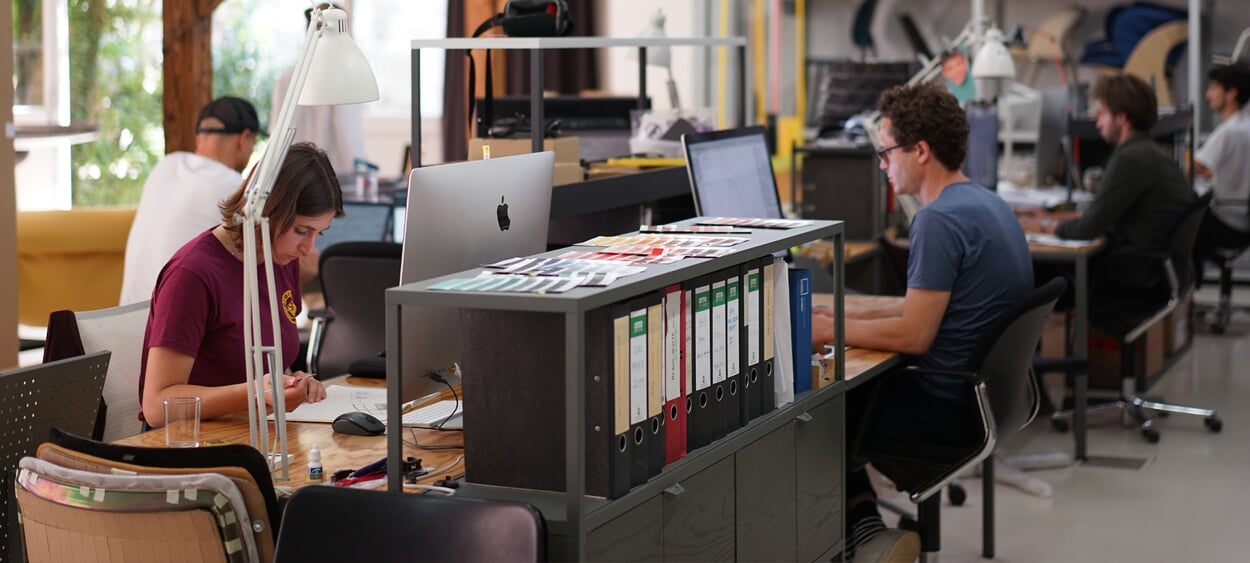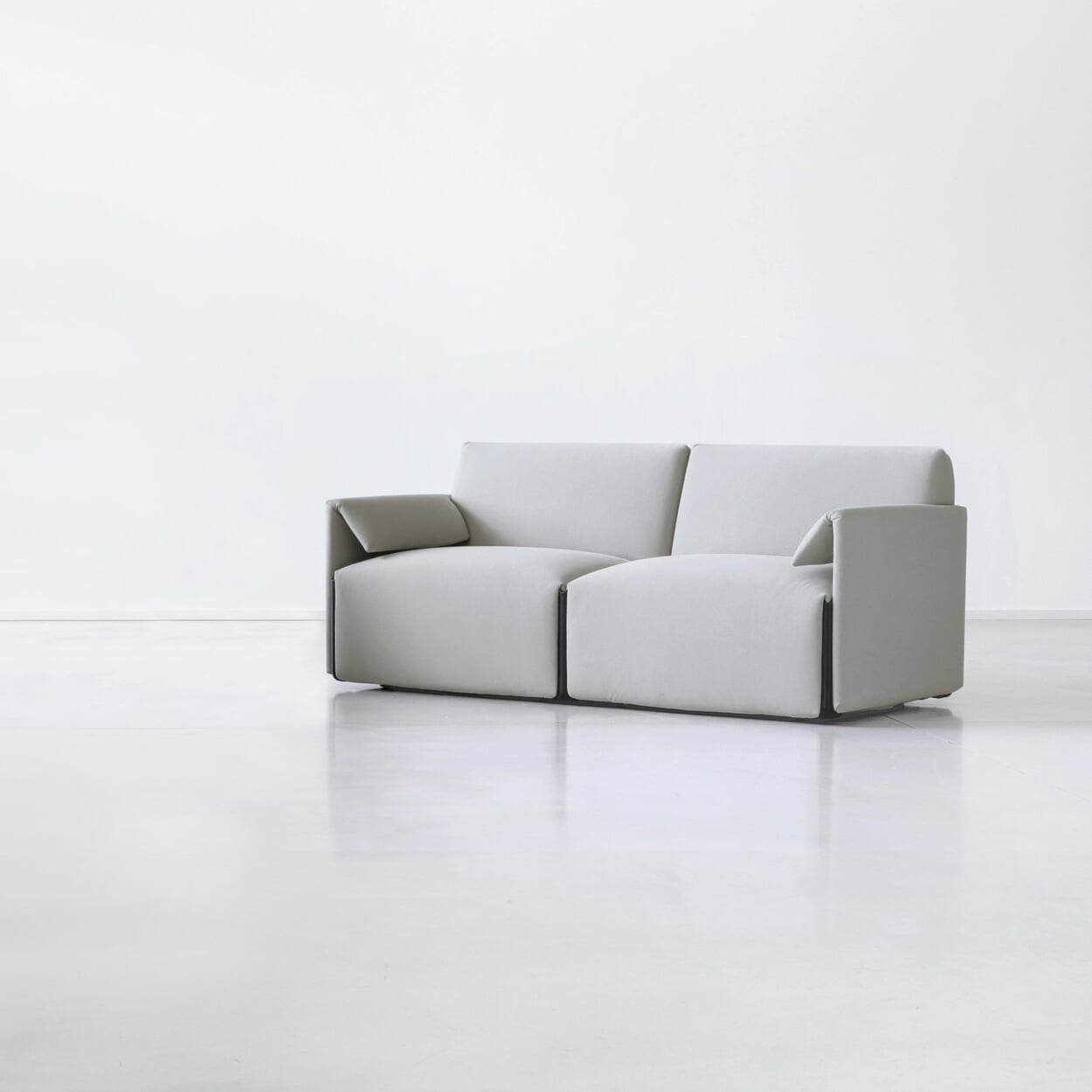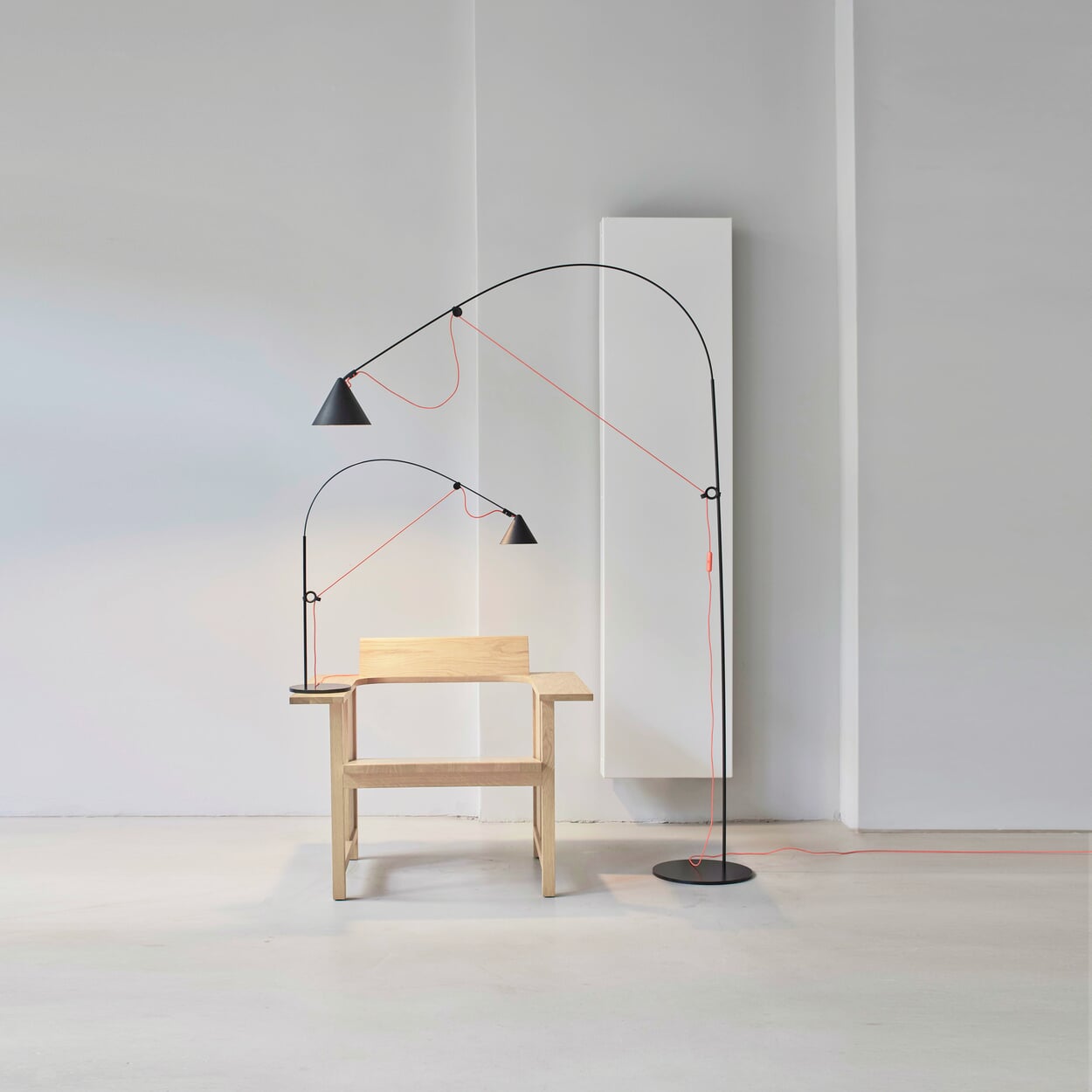Reportage
Out of the dilemma in the cycle
Stefan Diez tests design for a sustainable future
Around 80 percent: this is how much experts estimate that design contributes to the overall ecological and social impact of a product. This is because designers already determine decisive factors during the design process: above all, the materials and how they are processed. But also how well a product can be repaired, transported and recycled. Designers and their partners in the furniture industry are increasingly trying to live up to this responsibility - beyond greenwashing. German designer Stefan Diez is one of them; he has designed his new products, the AYNO lamp and the COSTUME sofa, for the circular economy.
A visit to Stefan Diez in Munich is always a visit to the idyllic. His studio is located in the tranquil Glockenbach district, through an inconspicuous front door into the backyard. A farm building with a shed roof and glass front, formerly a wood workshop, the designer has been working here with his team since 2007. When the weather is nice, everyone eats homemade pasta and salad together outside at the long table under the trees, followed by coffee. Inside, the shelves are stacked with models and prototypes of chairs for the German brand e15 or a lamp for Hay from Copenhagen. But as is the case with idylls, they can be deceptive: In this cheerful place, research is carried out with great seriousness into what the discipline of design can contribute to solving the major problems of our time. After all, designers naturally work in a dilemma: on the one hand, less consumption is the order of the day, while on the other, they contribute to keeping consumption going with ever new designs. "That's the crux of the matter: we designers are all part of the value chain," says Stefan Diez. At the beginning of the year, he published ten commandments for design in the circular economy, based on Dieter Rams' famous ten theses for good design. Diez did not originally formulate the commandments for public discourse; they emerged from discussions with employees during day-to-day work - as a self-imposed guideline for making projects more sustainable.
However, Diez hit a nerve with the publication. Numerous media picked up on the commandments to explain what material cycles, ease of repair and social awareness are all about. At the same time, two products were launched on the market in whose development process the commandments had been tested and honed: the AYNO luminaire for the Hamburg-based lighting brand Midgard, designed by Stefan Diez and Lina Fischer, and the COSTUME modular sofa system for Magis from Italy, designed by Diez and Dominik Hammer. Both products are exemplary not only because they already fulfill the commandments quite well - for example, they can be easily dismantled into their component parts and are easy to repair or recycle. They are also predominantly manufactured locally, the lamp in Germany and the sofa in Italy.
For Stefan Diez, they are also exemplary because they "create a win-win situation". They not only conserve resources, they also bring added value to the buyer. The sofa, for example, is based on a modular system consisting of just a few elements that can be put together in ever new configurations - after a move, for example. The covers are removable and can be washed or reordered - in case of a mishap. "We don't want to leave it up to the customer and their conscience to decide whether they buy a sustainable product," says the designer. "We want to create an advantage beyond the circular aspect. Sustainability has to get out of the prohibition corner." The Munich-based designer has been working on design in the circular economy for some time - the "Chassis" chair for Wilkhahn was his first attempt in 2011 - but he still had to invest a lot of development work in the current products. COSTUME took more than four years to get ready for series production. In conventional sofas, the frame, upholstery and cover are often firmly connected, whereas the basic module of COSTUME consists of loose elements that are only held together by the cover. Sounds simple, but how exactly the cover is stretched so that it doesn't crease unsightly, and which upholstery materials are really recyclable - Diez, Hammer and Magis had to experiment a lot to solve such problems and keep coming up with new ideas.
The AYNO luminaire was developed more quickly; the findings from the work on COSTUME were helpful. But after the first presentation in January 2020, it still took a whole year to work out all the details, such as the plastic adjustment rings. The reward for the effort? Products that point the way to the future of design. Even if there is still a long way to go: "We won't achieve an ideal circular economy in the foreseeable future," says Stefan Diez. "We will mostly be working with a mixture of recycled and new raw materials." We therefore need to use materials efficiently in general. Last but not least, there is the realization that designers can free themselves from the dilemma and contribute to the sustainable transformation of society. And this is also possible in the idyllic backyard.
Pictures: Office Diez









